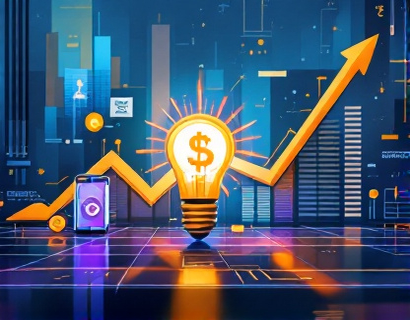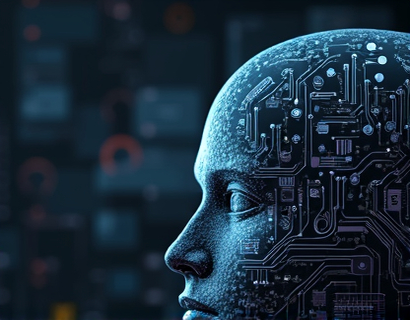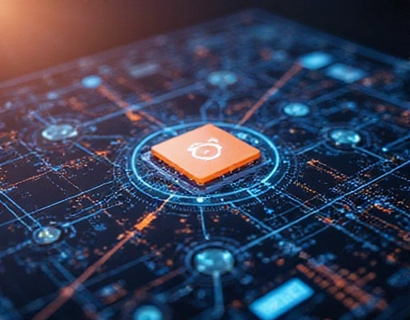Revolutionizing Digital Asset Management: The Decentralized dApp for Cross-Blockchain Conversions
The blockchain ecosystem has witnessed significant advancements in recent years, with decentralized applications (dApps) emerging as a transformative force. One of the most promising developments is a cutting-edge dApp that addresses a critical challenge in the digital asset management space: the seamless conversion of assets across multiple blockchains. This innovative solution is designed to streamline cross-blockchain transfers, ensuring compatibility, efficiency, and security for blockchain professionals and digital asset managers.
The traditional process of converting digital assets between blockchains has been fraught with complexities. Each blockchain has its unique protocols, smart contract standards, and transaction formats, making direct asset transfer a cumbersome task. This process often requires intermediaries, which can introduce delays, higher fees, and potential security risks. The introduction of a decentralized dApp aims to revolutionize this landscape by providing a user-friendly, trustless, and efficient method for asset conversion.
Understanding the Need for Cross-Blockchain Asset Conversion
The diversity of blockchains, each with its own set of features and limitations, has led to a fragmented digital asset ecosystem. Users and businesses often find themselves holding assets on different blockchains, necessitating the need to transfer these assets for various purposes such as trading, collateralization, or simply to diversify their portfolio. However, the current methods of cross-blockchain conversion are often inefficient and prone to errors. A decentralized dApp addresses these issues by offering a standardized and automated solution.
The primary goal of this dApp is to enable users to convert their digital assets from one blockchain to another without the need for intermediaries. This not only reduces transaction costs and time but also minimizes the risk of human error and security breaches. The dApp achieves this by leveraging the power of smart contracts and decentralized networks, ensuring that asset conversions are transparent, verifiable, and secure.
How the Decentralized dApp Works
The operation of this decentralized dApp is based on a robust architecture that integrates multiple blockchain networks through a series of well-defined protocols. Here’s a high-level overview of the process:
First, the user initiates a conversion request within the dApp, selecting the source and target blockchains for the asset transfer. The dApp then generates a unique transaction request that includes all necessary parameters such as asset amount, conversion rates, and any additional metadata.
This request is broadcast to a network of validator nodes distributed across the source and target blockchains. These nodes, running smart contracts, verify the request and execute the conversion process. The smart contracts ensure that the conversion adheres to the specific protocols of each blockchain, maintaining the integrity and consistency of the asset data.
Once the conversion is complete, the target blockchain confirms the transaction, and the asset is transferred to the user’s wallet on the target network. The entire process is recorded on a decentralized ledger, providing a transparent and auditable trail for all participants.
Key Features and Benefits
The decentralized dApp offers several key features that set it apart from traditional cross-blockchain conversion methods:
- Decentralization: By eliminating intermediaries, the dApp reduces the risk of single points of failure and enhances the overall security of the asset transfer process.
- Efficiency: Automated smart contracts streamline the conversion process, reducing transaction times and costs associated with manual interventions.
- Compatibility: The dApp supports a wide range of blockchains, ensuring that users can convert assets between virtually any blockchain networks.
- Transparency: All transactions are recorded on a public ledger, providing users with full visibility and traceability of their asset movements.
- User-Friendly Interface: The dApp is designed with a intuitive interface, making it accessible to both technical and non-technical users.
These features collectively enhance the user experience, making cross-blockchain asset conversion more accessible and reliable. For blockchain professionals and digital asset managers, this means a significant reduction in operational complexity and an increase in efficiency.
Technical Underpinnings
To understand the technical brilliance behind this dApp, it’s essential to delve into the underlying technologies and protocols:
At the core of the dApp is a layer of smart contracts that facilitate the conversion process. These smart contracts are deployed on multiple blockchains and are programmed to interact with each other in a predefined manner. The smart contracts handle the following tasks:
- Request Validation: Verifying the authenticity and integrity of the conversion request.
- Asset Locking: Temporarily locking the assets on the source blockchain to prevent double spending.
- Conversion Logic: Applying the appropriate conversion rates and executing the asset transformation based on the target blockchain’s requirements.
- Confirmation and Release: Ensuring the target blockchain confirms the transaction and releasing the converted assets to the user’s wallet.
To ensure seamless interaction between different blockchains, the dApp employs a combination of cross-chain bridges and atomic swaps. Cross-chain bridges enable the transfer of assets between blockchains with different consensus mechanisms, while atomic swaps allow for direct, trustless exchanges of assets without the need for a central intermediary.
Security is a paramount concern, and the dApp incorporates multiple layers of security measures. These include cryptographic hashing for transaction integrity, multi-signature wallets for asset locking, and real-time monitoring to detect and prevent malicious activities.
Use Cases and Applications
The versatility of this decentralized dApp makes it suitable for a wide range of use cases:
For traders and speculators, the ability to quickly and efficiently convert assets between blockchains can provide a competitive edge in the fast-paced cryptocurrency markets. Traders can take advantage of price arbitrage opportunities across different blockchains without the hassle of manual conversions.
For decentralized finance (DeFi) participants, the dApp facilitates the movement of assets between various DeFi protocols and platforms, enhancing liquidity and access to a broader range of financial products.
For blockchain developers and project teams, the dApp simplifies the process of moving assets for testing, deployment, and collaboration across different blockchain environments. This can significantly reduce the time and resources required for cross-chain development tasks.
Additionally, the dApp can be leveraged by digital asset managers to optimize their portfolio management by seamlessly transferring assets between blockchains, thereby improving asset allocation and risk management strategies.
Challenges and Future Developments
While the potential of this decentralized dApp is immense, there are still challenges that need to be addressed to ensure its widespread adoption:
One of the primary challenges is the interoperability of different blockchain networks. Each blockchain has its unique features and limitations, and creating a universal conversion protocol that works seamlessly across all of them is a complex task. Continuous collaboration and standardization efforts among blockchain projects are essential to overcome this hurdle.
Another challenge is the scalability of the dApp. As the number of users and transactions increases, the system must be able to handle the load without compromising performance. This requires ongoing optimization of smart contracts and the underlying infrastructure.
Privacy concerns also need to be addressed. While transparency is a strength of blockchain, users may require more privacy for their transactions. Implementing privacy-enhancing technologies such as zero-knowledge proofs can help balance transparency with user privacy.
Looking ahead, the future of cross-blockchain asset conversion is promising. As more blockchains adopt interoperability standards and the ecosystem matures, the dApp can evolve to support even more blockchains and asset types. Integration with emerging technologies like layer 2 solutions and quantum-resistant algorithms will further enhance the dApp’s capabilities and security.
Conclusion
The introduction of a decentralized dApp for cross-blockchain asset conversion represents a significant leap forward in the blockchain ecosystem. By addressing the pain points of traditional conversion methods, this dApp offers a secure, efficient, and user-friendly solution for digital asset management. For blockchain professionals and enthusiasts, this innovation not only simplifies asset transfers but also opens up new possibilities for cross-chain collaboration and innovation. As the technology continues to evolve, the dApp is poised to play a crucial role in shaping the future of decentralized finance and digital asset management.











































